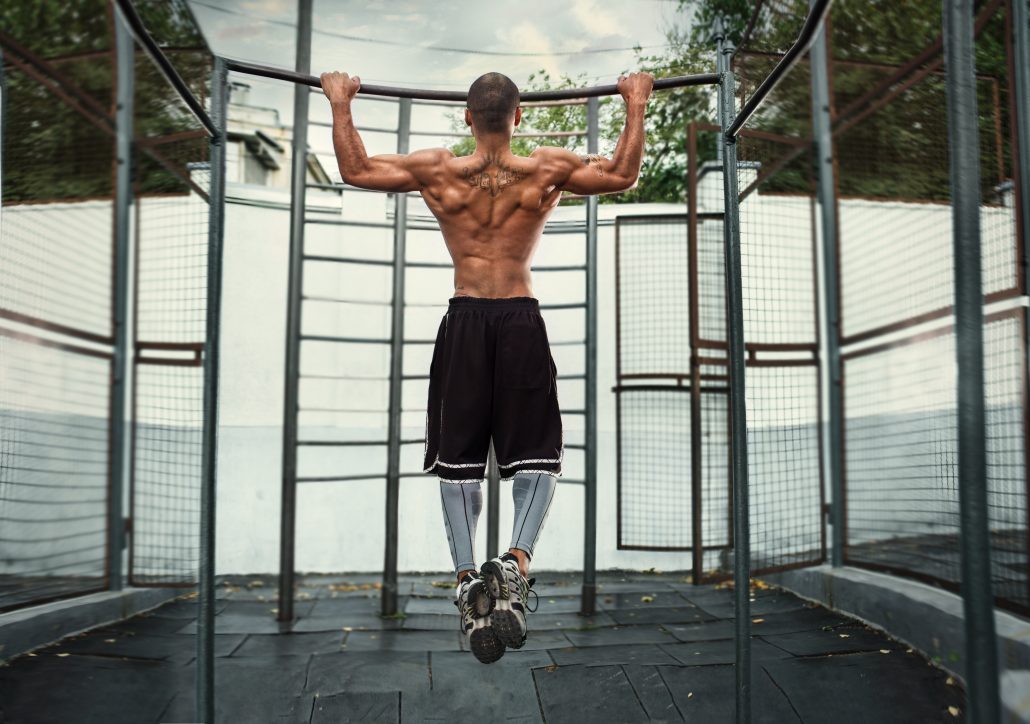Why you can’t do a pull-up and how to get there
A pull-up requires a variety of muscles. In fact, depending on how the pull-up is done, dozens of muscle groups are activated in the process. But if those muscles aren’t strong enough and if the movement isn’t coordinated, that chin isn’t going to make it over the bar.
Why Pull-Ups?
When our bodies grow accustomed to sitting for long periods of time, our chests cave in and our upper back becomes rounded. This posture issue leads to weak muscles in the upper back, which happen to be the important muscles for finishing a pull-up. Developing the ability to do a pull-up can counter the effects of a desk job.
Pull-ups also promote stability in the shoulder joint and help strengthen the many muscles activated in the motion. It is one of the more useful exercises for real-world activities, whether you’re climbing, pulling, playing sports, etc.
How to Get There: 5 Exercises
Lat Pull-Down Machines
Lats—the wide muscles extending across the mid and lower back—are engaged with the movement and rotation of the arms, and they are a large part of the pull-up movement. A pull-down machine lets you do the motion of a pull-up, but with a customized weight. Mimic a pull-up by gripping the bar slightly wider than shoulder-width.
Bent-Over Rows
With a bar or dumbbells, bend over slightly while standing up, bringing the shoulders out past your toes. Keeping your back straight, bring the weight from a hanging, extended arm position up to your rib cage, and hold for a few seconds.
Sled Pull
Attached a rope to a weight sled and pull the rope toward you, hand over hand.
Negative Rope Climb
Get up the rope however you can, using feet and hands. On the way down, only use your arms, hand over hand. Try this from a low height first to make sure you can handle it!
Supported Hangs
Having a proper and supported hanging position is vital for being able to do a pull-up. Hanging on the bar can build shoulder stability. Make sure your back muscles are engaged and shoulders are level. If your ears are touching your shoulders, your hang is not properly supported.
Rotator Cuff Workouts
Protect your rotator cuff as you go through the pull-up progression process. With a light dumbbell, lie on your back. Extend your arm directly above the shoulder, and do circle motions, first one way and then the other.
Chin-Up Versus Pull-Up
Chin-Up: With this exercise, you have a reverse grip on the bar, meaning you face your palms. It works the pectorals and biceps more than a pull-up.
Pull-Up: This exercise has you gripping the bar with palms facing out. It activates the lower trapezius more than the chin-up. Pull-ups also require a greater range of motion than chin-ups for both the elbows and the shoulders.
Should I Kick to Do a Pull-Up?
For those who already have the strength and joint stability to do about five pull-ups, a controlled kick—also called “kipping”—is okay. But for people currently building towards a pull-up ability, kipping can put a lot of strain on shoulders and could even lead to injury. Besides, why make it easier if you’re doing a pull-up to get stronger?
